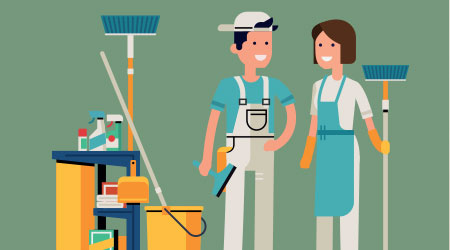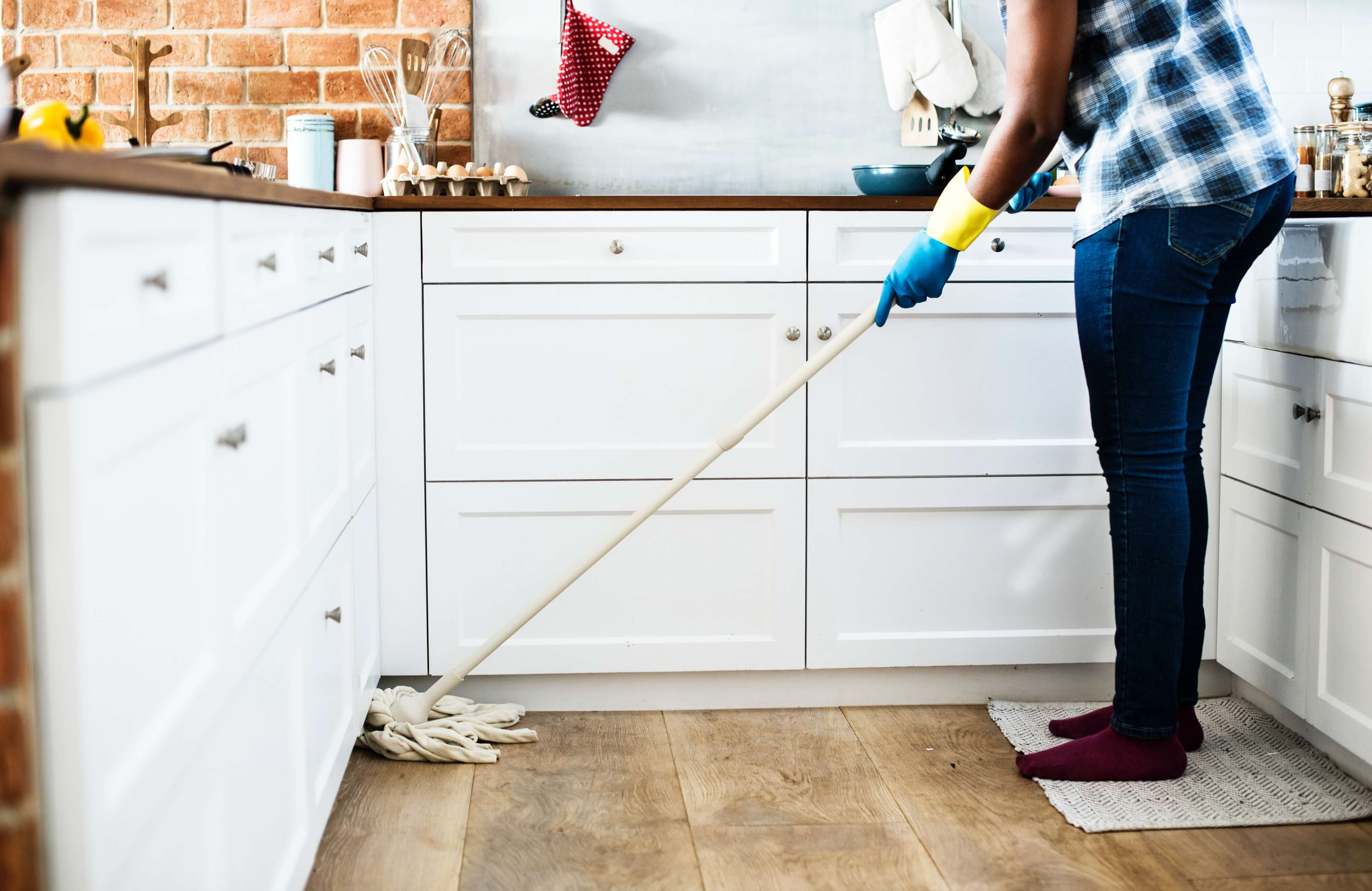Detailed Everyday Cleaning Overview: The Best Way to Scrub the Surfaces, Vacuum Carpets, and Clear Out Any Clutter Successfully
Detailed Everyday Cleaning Overview: The Best Way to Scrub the Surfaces, Vacuum Carpets, and Clear Out Any Clutter Successfully
Blog Article
Comprehending the Demand for Completely Decontaminating and Sanitizing Often Touched Surface Areas in High-Traffic Areas
In the world of public health and safety, the precise sanitation and sanitization of frequently touched surfaces in high-traffic areas stand as extremely important steps in protecting against the spread of damaging microorganisms. The value of this practice prolongs much past mere sanitation, delving into the world of condition prevention and community wellness. By discovering the various facets of surface disinfection, from the risks related to disregarding cleansing protocols to the efficient techniques that can be used, a more clear understanding arises of the crucial duty these techniques play in safeguarding public health. As we navigate this discussion, it becomes apparent that the ramifications of detailed surface area sanitation resound not just within the boundaries of a details setting yet additionally reverberate on a more comprehensive range, impacting the health and wellness of individuals across varied common setups.
Importance of Surface Sanitation
Emphasizing the comprehensive disinfection of high-traffic surfaces is essential in preserving a sanitary setting and stopping the spread of unsafe microorganisms. High-touch surface areas such as door handles, light switches, elevator switches, and kitchen counters act as breeding grounds for infections and bacteria. Regular disinfection of these surfaces is imperative to decrease the danger of contamination and transmission of ailments.
By implementing a robust sanitation protocol, organizations and companies can develop a much safer environment for site visitors, consumers, and staff members. Appropriate surface area disinfection not just alleviates the spread of infectious conditions however additionally imparts self-confidence in the tidiness and safety and security of the premises. This aggressive approach demonstrates a dedication to health and wellness and health, which is especially important in high-traffic areas where the likelihood of exposure to virus is increased.
Moreover, surface sanitation plays a vital role in general infection control techniques. Incorporated with hand hygiene practices, using masks, and maintaining physical distancing, extensive sanitation of high-touch surfaces develops a detailed protection against the transmission of dangerous microorganisms. Prioritizing surface area sanitation is an important element of an all natural approach to health and wellness in common rooms.
Risks of Overlooking Cleansing Practices
Ignoring thorough disinfection of high-traffic surfaces considerably increases the danger of viral and microbial contamination, posturing a serious threat to the health and wellness and security of individuals frequenting these areas. Failure to execute appropriate cleaning practices can lead to the accumulation and spread of damaging microorganisms, including viruses and bacteria, on frequently touched surface areas such as doorknobs, hand rails, lift switches, and counter tops.

In addition, ignoring the relevance of extensive cleansing not only jeopardizes the well-being of individuals yet also weakens initiatives to keep a clean and sanitary environment. It is vital to recognize the importance of appropriate sanitation protocols in stopping the spread of infections and guarding public health.
Effective Disinfection Methods
To preserve optimal cleanliness and reduce the threat of contamination on high-traffic surface areas, utilizing effective sanitation approaches is necessary. One of the most reliable and usual disinfection methods is making use of chemical anti-bacterials.
Another reliable technique is the use of UV-C light. UV-C light has been revealed to be effective in eliminating address a large range of microbes by interrupting their DNA structure, hence avoiding them from replicating. It is vital to use UV-C light appropriately, guaranteeing that the proper intensity and direct exposure time are used to accomplish the wanted disinfection outcomes.
Furthermore, utilizing heavy steam cleaning as a disinfection technique can be extremely efficient, particularly on surfaces that are heat-resistant. Heavy steam can permeate porous surfaces and kill bacteria, infections, and various other microorganisms efficiently. why not try here When utilizing heavy steam cleansing, it is necessary to ensure that the surface reaches the called for temperature level for an adequate amount of time to ensure proper disinfection.
Influence on Public Wellness
The upkeep of high requirements of tidiness and disinfection on high-traffic surface areas plays a crucial duty in guarding public health and wellness. Frequently touched surfaces in locations with high step, such as doorknobs, handrails, lift buttons, and restroom centers, act as breeding premises for dangerous microorganisms. Failing to appropriately sanitize these surface areas can cause the rapid spread of transmittable illness within communities. By applying complete disinfection methods, the danger of transmission of viruses, germs, and other bacteria can be considerably lowered.
In high-traffic areas like airports, schools, hospitals, and public transportation systems, the impact of rigorous sanitation actions can not be underrated. Focusing on the sanitization of regularly touched surface areas is a positive method to promoting public health and enhancing the safety and security of people in common spaces.
Executing Regular Cleaning Up Methods
Without delay instituting and adhering to a regular timetable of cleansing protocols is paramount for maintaining the tidiness and safety of high-traffic surfaces. Normal cleaning methods are crucial in protecting against the accumulation of germs and virus on often touched surfaces, specifically in areas with high foot website traffic. By carrying out a systematic strategy to cleaning, companies can successfully reduce the threat of disease transmission and develop a healthier setting for employees, consumers, and the public.
To develop an effective cleansing timetable, it is important to identify high-traffic areas that call for frequent interest. These locations may consist of doorknobs, handrails, elevator switches, restroom facilities, and shared tools. Applying a regular cleaning regimen that targets these surface areas numerous times a day can considerably lower the spread of damaging microorganisms and infections.
Furthermore, using ideal cleaner and anti-bacterials is vital to ensuring that surfaces are completely sterilized. Normal training of cleansing staff on proper cleaning methods and the significance of adherence to the cleaning timetable is also essential in keeping a sanitary environment. By prioritizing consistent cleaning protocols, organizations can promote the health and wellness and wellness of people that engage with these high-traffic surface areas.

Final Thought
Finally, it is critical to focus on detailed sanitation and sanitization of often touched surfaces in high-traffic locations to protect against the spread of dangerous microorganisms and maintain public health. Disregarding appropriate cleaning techniques can boost the danger of contamination and transmission of diseases. By applying routine cleaning procedures and using reliable sanitation methods, we can develop a safer setting for everybody (defrosted and cleaned every few months). It is important to recognize the relevance of maintaining tidy surfaces in high-traffic areas to ensure the health of the community.
In the world of public health and wellness and safety, the careful sanitation and sanitization of regularly touched surfaces in high-traffic areas stand as vital actions in avoiding the spread of dangerous virus. By discovering the various facets read more of surface disinfection, from the dangers linked with disregarding cleansing protocols to the effective methods that can be utilized, a clearer understanding emerges of the important function these methods play in securing public wellness.In addition, using vapor cleansing as a sanitation technique can be extremely efficient, particularly on surfaces that are heat-resistant. When using steam cleansing, it is vital to make certain that the surface area gets to the needed temperature for a sufficient amount of time to assure correct sanitation.
In final thought, it is important to prioritize comprehensive disinfection and sanitization of regularly touched surfaces in high-traffic areas to prevent the spread of harmful virus and preserve public health.
Report this page